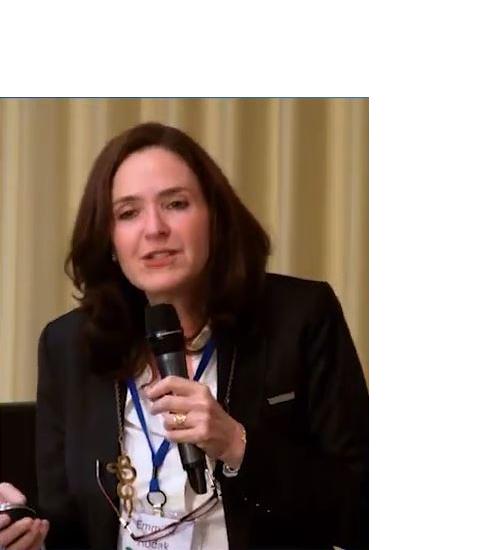Cutaneous lymphoma is a rare disease in general. It is even rarer to find it in children.
In Europe and the United States, up to 5% of all cases are diagnosed before the age of 20. However, in some parts of the world, such as the Arab populations in the Middle East, children constitute up to 60% of the patients with mycosis fungoides. Prevalence rates differ greatly among geographic regions and populations.
The cause of cutaneous lymphoma is not known.
No lifestyle factors have been definitely linked to childhood cutaneous lymphoma. Neither parents nor children have control over factors that may cause the disease. Children, who have had Hodgkin lymphoma, may carry a slightly higher risk of developing cutaneous lymphoma, but this is quite rare.1
EXPERT PRESENTER
Emmilia Hodak, MD, Rabin Medical Center, Beilinson Hospital, Sackler School of Medicine, Tel-Aviv University
Among children, the distinguishing features of this disease can be misleading, making it ever more difficult to diagnose cutaneous lymphoma in children. Mycosis fungoides (MF) is the most frequently diagnosed primary cutaneous lymphoma in childhood other than lymphomatoid papulosis. However, due to its uncommon manifestation in young patients, the diagnosis of cutaneous lymphoma is often delayed or missed. This is further complicated by the fact that MF may clinically simulate benign rashes, in particular atopic dermatitis, eczema or vitiligo. One of the most common misdiagnosis is “ringworm”.1
When children have chronic inflammatory dermatitis, which are ongoing skin conditions that are not classified with a certain diagnosis (an unusual presentation of psoriasis, eczema or atopic dermatitis), physicians must consider the possibility of mycosis fungoides. The challenges of diagnosing and treating such complex and often ambiguous diseases are magnified by parents’ concerns, expectations, and a child’s own level of understanding.
Another complicating factor is that the medical community is usually hesitant to perform biopsies on children unless there is absolute indication of the presence of this disease – and biopsy is the best way to firmly diagnose cutaneous lymphoma. For these reasons, diagnosis in children is often delayed much longer than in adults. The prognosis for children is similar to adults.
It has only been in the last several years that investigators have truly begun to understand the characteristics of pediatric presentations of cutaneous lymphoma as more data has become available.
A few studies have described the clinical and pathological aspects of MF in children and adolescents. Investigators found that most young patients presented with white or very light-colored, so-called “hypopigmented” patches on the skin. When these patches were biopsied and stained for certain lymphocyte (white blood cell) markers, the initial manifestation of MF was characterized by the presence of CD8+ T-cell phenotype, unlike the CD4+ T- cell phenotype usually encountered in MF. Of note, most young patients were found to have early stage disease without spread into blood, lymph nodes or organs.1
As of 2025, Pediatric Guidelines for Mycosis Fungoides have become available to guide clinicians in diagnosing, staging and treating patients 18 and younger. Learn more about and find links to the guidelines here.
Unfortunately, there are no specific guidelines for treatment of cutaneous lymphoma in children.
The treatment choices should be influenced by their long-term risks and side-effects. In general, skin-directed therapies such as phototherapy with narrowband-UVB light, intermittent use of topical steroids, topical retinoids, topical nitrogen mustard and/or tacrolimus (calcineurin inhibitors as used in atopic dermatitis/eczema) may be indicated. These therapies are the cornerstones to control recurrent rashes and relief of itch in mycosis fungoides.1
Rarely, in severe cases systemic therapies are needed.1 Pediatric patients in need of systemic chemotherapy may develop leukemia later on in life, and patients taking retinoids such as isotretinoin (Accutane®) are at risk of premature stunting of bone growth. In the end, proper treatment for pediatric cutaneous lymphoma is individualized to the unique occurrence and needs of each patient.
Quick showers/bathing with mild unscented soaps and emollients are important to control skin dryness, minimize infections and also important to restore the skin barrier. Bubble baths are not recommended as they can increase itching. Similar to atopic dermatitis/eczema there is little dispute that the presence of bacteria on the skin such as Staphylococcus aureus is common in mycosis fungoides and can worsen skin disease. Dilute bleach baths as directed by your doctor help to minimize the risk for germ spreading and infection.1
EXPERT PRESENTERS
Lauren Pinter-Brown, MD, FACP, Professor, Department of Medicine, Division of Hematology/Oncology, UC Irvine Medical Center (At time of publication: Clinical Professor of Medicine, David Geffen School of Medicine, UCLA School of Medicine)
Steven Horwitz, MD, Medical Oncologist, Memorial-Sloan Kettering Cancer Center
None of the published studies have been large enough to assess prognosis and outcome in childhood. However, data from retrospective studies suggest that the outcome of CTCL in childhood seems rather better compared to adults when monitored over a median time period of 9 years. Very rarely, children have flare-ups. These data are in line with our experience at our centers and the recent findings researched by Dr. Guitart’s team at Northwestern University who followed more than 100 children with MF. They found that most children and teenagers with MF had limited patch disease involving less than 10% of the skin. Most importantly, they found that young patients rarely (3 patients out of 76) developed skin tumor lesions and none progressed into lymph glands, organs or blood.1
Every young patient should be evaluated by a team or team member specializing in cutaneous lymphoma with the expectation that he or she will return to a normal life focused on family, friends, and the future.1
References on page:
1. "Diagnosing and Treating Young CTCL Patients," Christiane Querfeld, MD, PhD and Joan Guitart, MD, Cutaneous Lymphoma Foundation's Forum Fall 2013.




